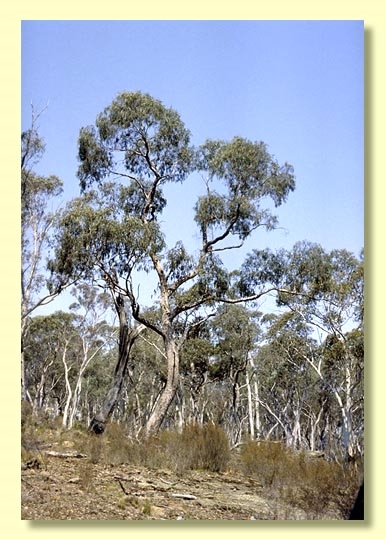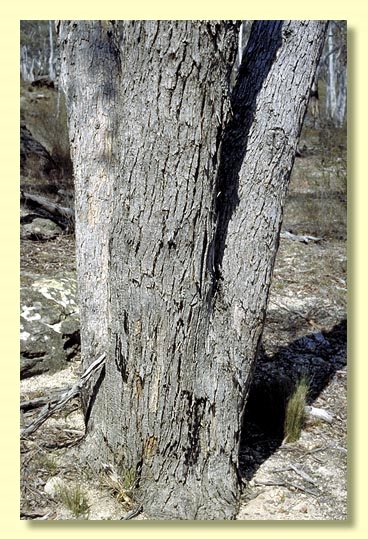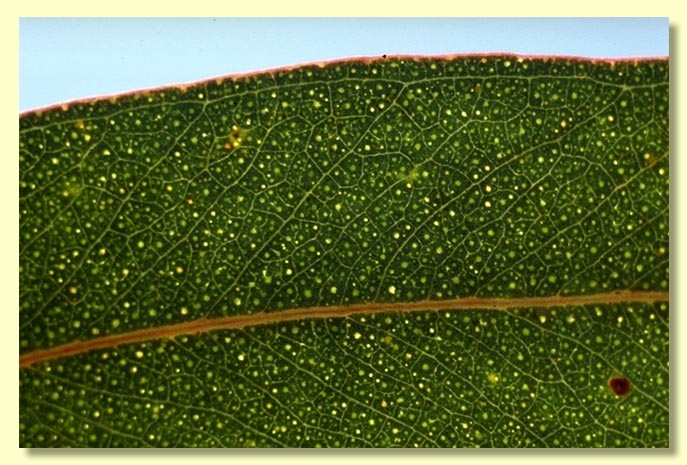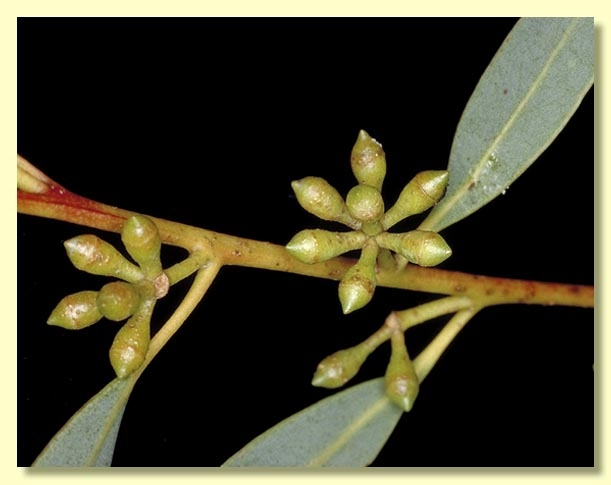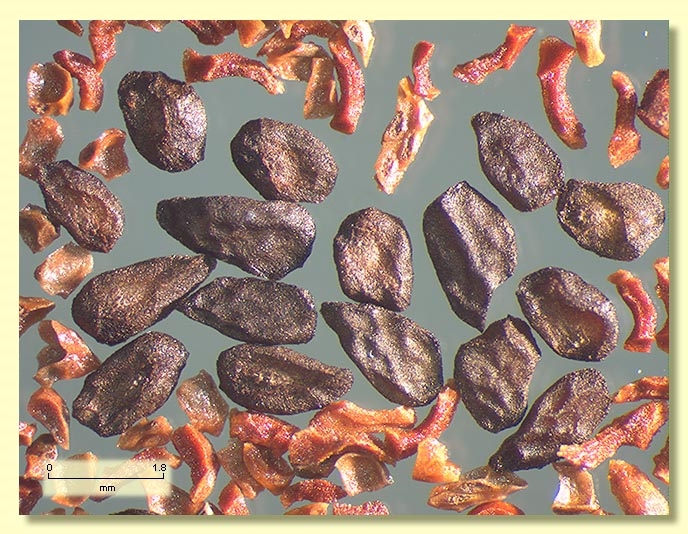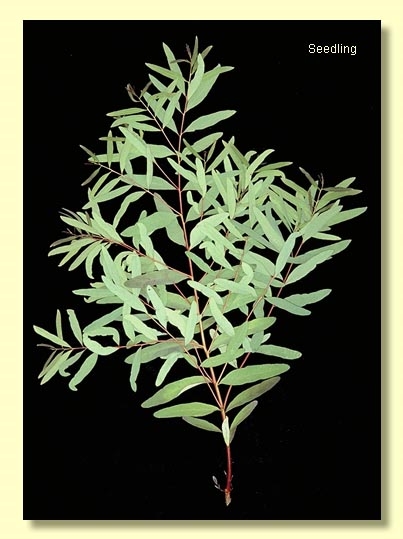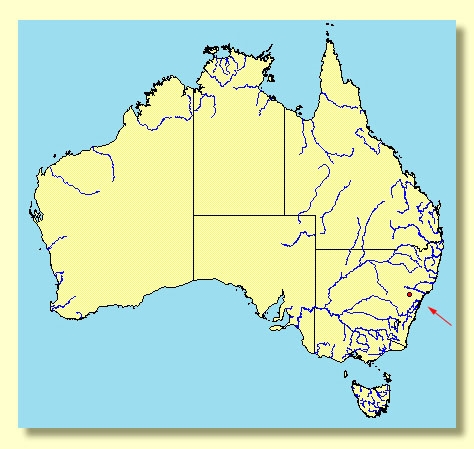Euclid - Online edition
Eucalyptus corticosa
Eucalyptus | Symphyomyrtus | Maidenaria | Triangulares | Acaciiformes
T: about 3 miles [5 km] east of Currant Mountain Gap, about 8 miles [13 km] east of Olinda, NSW, 9 Apr. 1955, L.A.S.Johnson s.n.; holo: NSW 50476; iso: K.
Bark rough on trunk, sometimes extending to small branches, fibrous, sometimes fissured and forming longitudinal slabs, sometimes tessellated in part, grey; smooth bark grey, grey-brown to pale orange.
Juvenile growth (coppice or field seedlings to 50 cm): stems round in cross-section; juvenile leaves opposite for 5 to 10 nodes, then alternate, shorly petiolate, narrow-oblong, dull, green.
Adult leaves alternate, petiole 0.8–2.1 cm long; blade lanceolate to falcate, 7–15 cm long, 0.9–2.2 cm wide, base tapering to petiole, concolorous, dull, green, side-veins greater than 45° to midrib, moderately to densely reticulate, intramarginal vein parallel to and just within margin, oil glands mostly island.
Inflorescence axillary unbranched, peduncles 0.2–0.6 cm long, buds 7 per umbel, pedicels 0.2–0.3 cm long. Mature buds ovoid to obovoid, 0.4–0.5 cm long, 0.3–0.4 cm wide, green to yellow, smooth, scar present, operculum conical to rounded, stamens irregularly flexed, anthers cuboid to oblong, versatile, dorsifixed, dehiscing by longitudinal slits (non-confluent), style long, stigma blunt, locules 3 or 4, the placentae each with 4 vertical ovule rows. Flowers white.
Fruit pedicellate (pedicels 0.1–0.3 cm long), cup-shaped or hemispherical, 0.3–0.5 cm long, 0.3–0.6 cm wide, disc raised-convex or -oblique, valves 3 or 4, near rim level.
Seeds brown, 1.5–2 mm long, ovoid or flattened-ovoid, lacunose, dorsal surface shallowly pitted, hilum ventral.
Cultivated seedlings (measured at ca node 10): cotyledons bilobed; stems rounded in cross-section; leaves sessile to shortly petiolate, opposite for ca 5 nodes then alternate, linear to narrowly oblong, 4.5–5.5 cm long, 0.4–0.8 cm wide, base tapering, apex blunt or pointed, dull, green.
Flowering has been recorded in June.
A small tree restricted to the lower stony slopes of one valley east of Rylstone on the Central Western Slopes of New South Wales, on sandstone-derived soil.
Being rough-barked, with dull, acuminate leaves and seven buds per inflorescence, E. corticosa should not be confused with any other species in the area, particularly monocalypts which lack an operculum scar. The nearby E. camphora occurs in swamps and has elliptical to ovate adult leaves that are often emarginate.
Eucalyptus corticosa belongs Eucalyptus subgenus Symphyomyrtus section Maidenaria, a large group of species more or less restricted to south-eastern Australia, characterised by bilobed cotyledons, simple axillary inflorescences, buds with two opercula, stamens with versatile anthers and flattened seeds with a ventral hilum. Within this section E. corticosa and five other species form series Acaciiformes diagnosed by the rough bark, juvenile leaves that are soon alternate, glandular adult leaves, non-swampy habitat, and small, rather flat-topped fruit.
E. acaciiformis and E. nicholii are restricted to the Northern Tablelands of New South Wales and differ from E. corticosa in having smaller juvenile leaves and narrower adult leaves.
E. aromaphloia subsp. sabulosa, an endemic in western Victoria, is very close to E. corticosa and differs only marginally by having rough bark usually extending to the small branches.
E. aromaphloia subsp. aromaphloia, E. fulgens and E. ignorabilis also have largely Victorian distributions and have shorter, broader juvenile leaves than E. corticosa.

